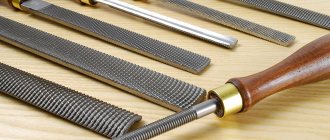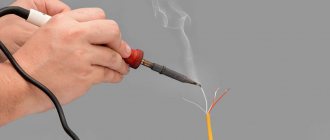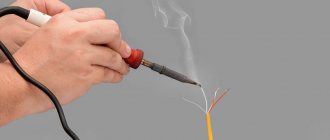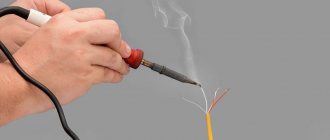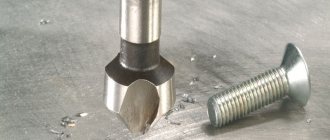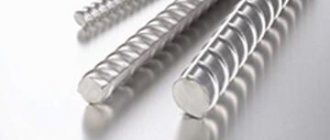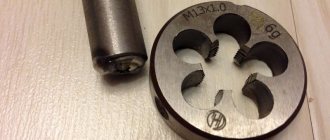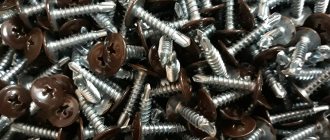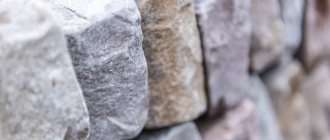A die is a special metal-cutting tool designed for creating external threads or for calibrating them on cylindrical workpieces. In addition to manual cutting, a lerka (this is another name for a die) can be used as equipment with which machine cutting is performed. To do this, it is installed on metal-cutting machines, for example, drilling or lathes. The simplicity of the die design, combined with its versatility, makes it possible to use it in serial industrial production, as well as in everyday life, where one-time work is usually performed.
Rules for cutting threads using dies
Only if the established rules of work are observed, it is possible to obtain a surface with high precision and quality. A die for cutting external threads must be used in conjunction with a special driver, through which force is transmitted.
Options for cutting with round and sliding dies
When considering how to cut a thread with a die, you should pay attention to the following points:
Application and GOST
There are the following GOST standards regulating the parameters of dies for threading:
- GOST 13536 – for round threads.
- GOST 6211 – regulates the characteristics of tapered threads.
- GOST 6111 – inch threads.
- GOST 9740 – cylindrical threads.
- GOST 9150 – regulates the parameters of metric threads.
The die can be used to cut external threads of various types (cylindrical, tapered, pipe, metric, etc.) on pipes and round steel workpieces. They are widely used in pipeline assembly, making studs and bolts, threading and for other purposes. One of the advantages of the die is its compactness, the ability to be used in field conditions, to work in hard-to-reach places with limited access.
Some technical characteristics and certain types of dies
It must be said right away that all such tools are used only in conjunction with special holders.
Such clamping tools, as a rule, can function normally with several hole diameters at once. For example, one holder is used with all lerks with a diameter of up to 1 cm, the same one holder is used with all lerks with a diameter from 12 mm to 24 mm, and the same situation with tools with diameters from 27 mm to 42.
Thread cutting tool
As mentioned earlier, there are tools that are capable of cutting pipe threads in metric and inch systems. The above dimensions are based on the metric system. There will always be a marking in the form of the letter “M” on the case. The full designation will also contain the thread pitch, that is, 8.10 and so on.
Terms of use
To make a screw on pipes, you will need a set of dies (GOST 9740-71), a driver, that is, a die holder, and a pipe clamp.
From the set of tools, select the blade that is suitable in diameter and pitch.
If it is not possible to visually determine what is needed, there is usually a corresponding marking on the case, usually on the side.
It is also important not to forget that the screw can be either right-handed or left-handed.
The process itself begins with preparing the pipe. To do this, the pipe is chamfered, which is easiest to do with a file. After this, any lubricating component is applied to the treated area. It can be vegetable oil, motor oil, or even ordinary lard.
Next, the die for cutting the thread, which must first be secured in the die holder, is brought to the pipe. It makes no less than two full turns, the direction of which coincides with the direction of the thread.
In the process of this work, with your second hand you need to press down on the blade from above so that it can cut into the metal. Once this happens, you can continue to screw to the required depth.
However, screwing should not be unidirectional. It is best to make a couple of turns forward and at least half a turn back.
Checking the operation is carried out by simply screwing the nut of the required size and with the required pitch.
Metric thread dies
It must be said that the highest quality and most accurate cutting is obtained with a split die. It has a locking ring that allows you to adjust the thread diameter.
There is one more nuance with pipes. For example, they can have several types of screw connections:
- Persistent, that is, when the elements being connected are subjected to constant, large one-sided pressure;
- Rectangular, that is, when the elements being connected are in motion;
- Trapezoidal;
- Triangular.
Any of these types is made in the sequence described above.
Conclusion: As you can see, the screw is used everywhere, as it is a fairly reliable, reusable fastening method. For this reason, there are quite a lot of tools that are capable of cutting threads, both external and internal. Each of them has its own differences and application specifications. In addition, each of them has its own GOST, which regulates their production.
Rules of procedure
When working with pipes, it is important to stock up on dies with a pipe clamp and a wrench. The die is selected taking into account the type of thread required
This can be determined by checking the stamp or inspection. The dies must be marked. The data on them will give an idea of what brand the tool is made from.
Most pipes require straight threads. Also, before working, you need to determine its direction: right or left. To do this, a letter indicator is depicted on the dies: “L” is left, and “P” is right. The die also indicates what grade of steel it belongs to, this makes it possible to choose the right tool for cutting stainless steel pipes.
The cutting rules are quite simple:
1). Prepare the pipe for cutting. To do this, the chamfer is removed with a file, and the area is treated with an oil solution.
2). Insert the die into the holder, securing it with screws.
3). Bring the die to the product and make several circular rotations in the required direction of the thread.
4). Lightly press down the die to embed it into the material.
Scrolling algorithm:
- 2-3 turns in one direction;
- half a turn to the other.
And so on until the end of cutting
In this case, it is very important to keep the pipe and die strictly perpendicular. Otherwise, the thread will “walk”, which will affect the quality of the connection.
The arrangement of elements, as well as thread cutting, is demonstrated on video and photo materials for better results. Checking thread quality is easy. To do this, it is enough to screw the nut if it is screwed along the outer diameter of the pipe. The most accurate cut is obtained with a sliding die. It will help out if you urgently need to replace a piece of pipe that has a threaded connection.
Also, when choosing dies, it is important to consider what kind of thread will be made, external or internal. High-quality work will allow you to make a sealed threaded connection even in pressure water pipes
Let's sum it up
As you can see, making your own carving using dies is not at all difficult. To do this, it is enough to choose the right tool, put in a little effort and accuracy. Probably, many representatives of the male half of humanity remember how similar problems were solved in labor lessons at school. Therefore, for the majority, it will only be necessary to remember the acquired skills and apply them in adulthood. It’s like riding a bicycle: you only need to learn once to feel confident in the saddle even after a long break.
Pipe dies
The thread on a water pipe differs slightly from the usual one, primarily in size. This is due to the fact that the binding starts from an inch. There's just one catch. If the pipe is 10 inches, this does not mean that its diameter is 2.54 * 10 = 25.4 mm. Its diameter will be about 33 millimeters. This is due to the fact that conversion to the metric system is accompanied by the addition of two wall thicknesses.
Pipe dies
To avoid such confusion with dies, they began to be produced separately for water pipes. It is quite easy to distinguish them from standard ones - on the body there is a marking in the form of the Latin letter “G”.
Thus, it turns out that there are lerks on G1/2, G ¾, and so on.
In general, pipe tools allow you to make cuts on a pipe with dimensions from G1/8 to G2.
Thread direction
The thread can be right-handed (threads are cut clockwise) or left-handed (counterclockwise). Dies are also distinguished:
- Rights. Used for thread cutting on bolts, axles, screws.
- Left. They are used relatively less frequently in specific automotive elements, rotational mechanisms, and where right-hand threads will unwind. In the photo of the dies you can see the markings with the Latin letters “LH”.
Classification of dies
Recently, tool steel has been used in the manufacture of dies, which is highly resistant to abrasion. A die for cutting external threads can be classified according to the following criteria:
- Form.
- Cutting method.
- Housing design.
The following dies are distinguished by shape:
- In the form of a square. The outer part of the housing can be square-shaped, thereby simplifying the transmission of force.
- Tubular ones have become very widespread.
- In the form of a hexagon.
- An instrument with a round body shape has also become widespread. They allow you to obtain threads of fine or coarse pitch, metric or inch type.
The thread cutting tool can be of the following type according to its design characteristics:
- Solid - a fairly simple instrument that has a solid body. Characterized by low cost and ease of use.
- Split ones have a complex shape of internal space.
- Sliding machines have a complex design that can be used for cutting threads on cylindrical surfaces of various diameters. This is achieved by creating a housing with moving elements.
According to the method of thread cutting, the tool is divided into the following groups:
- For round threads.
- For cylindrical.
- For tapered threads.
The most widely used tool is a round one, since it can be used for cutting threads in one pass.
Material of manufacture
The following grades of steel are used as raw materials for the production of dies:
- alloyed specialized tool 9XC;
- alloyed instrumental XBCGF;
- high-speed tool P18;
- tungsten-molybdenum high-speed tool P6M5 and P6M5K5;
- self-hardening high-speed tool molybdenum-cobalt-containing R6M5F2K8
Lerks can also be made from hard alloys approved by GOST 3882-74. Their list is contained in the table.
| Group | Metal grade | Physical and mechanical characteristics | ||
| Hardness HRA, not less | Density, g/cm3 | Ultimate strength when exposed to bending kgf/mm2, not less | ||
| Titanium-tantalum-tungsten | T8K7 | 90,5 | 12,8-13,1 | 155 |
| TT20K9 | 91,0 | 12,0-12,5 | 150 | |
| TT10K8B | 80,9 | 13,5-13,8 | 165 | |
| TT8K6 | 90,5 | 12,8-13,3 | 135 | |
| TT7K12 | 87,0 | 13,0-13,3 | 170 | |
| Titanium-tungsten | T5K10 | 88,5 | 12,5-13,1 | 145 |
| T14K8 | 89,5 | 11,2-11,6 | 130 | |
| T15K6 | 90,0 | 11,1-11,6 | 120 | |
| T30K4 | 92,0 | 9,2-9,8 | 100 | |
| Tungsten | BK20-KC | 82,0 | 13,4-13,7 | 215 |
| BK15 | 86,0 | 13,9-14,4 | 190 | |
| BK11-BK | 87,0 | 14,1-14,4 | ||
| BK20 | 84,0 | 13,4-13,7 | 210 | |
| BK10-KC | 85,0 | 14,2-14,6 | 190 | |
| BK11-B | 86,0 | 14,1-14,4 | 200 | |
| BK4-B | 88,0 | 14,9-15,2 | 150 | |
| BK10-XOM | 89,0 | 14,3-14,7 | ||
| BK10 | 87,0 | 14,2-14,6 | 180 | |
| BK8-BK | 87,5 | 14,5-14,8 | ||
| BK8-B | 86,5 | 14,4-14,8 | 185 | |
| BK8 | 88,0 | 14,5-14,8 | 170 | |
| BK6-B | 87,5 | 14,6-15,0 | 170 | |
| BK6-OM | 90,5 | 14,7-15,0 | 130 | |
| BK6-M | 90,0 | 14,8-15,1 | 145 | |
| BK3-M | 91,0 | 15,0-15,3 | 120 | |
| BK6 | 88,5 | 14,6-15,0 | 155 | |
| BK3 | 89,5 | 15,0-15,3 | 120 | |
Dies whose cutting edges are made of these carbide alloys are capable of threading high-alloy steel rods. They are well suited for use in industrial environments.
Die holder with electric drive
It can already be considered as an intermediate model for thread cutting between a hand-held mechanical tool and a machine. An electric thread-cutting die holder greatly facilitates the work of thread cutting and is more productive. There are different delivery options depending on the set of accessories and fixtures.
In their work, they use the same heads as manual models (of course, within the same brand and restrictions on thread diameter). The guide jaws in the head are not enough to ensure a stable position of the tool. Still, the “weakest” of them has a power of 750 Watts, but models from 1000 Watts are more often used.
If we consider that the transmission of rotation takes place with a powerful reduction gearbox, and 1 hp is equal to 735.5 watts, then holding a working tool in your hands is already problematic. Therefore, the kit includes a clamp-retainer. As an additional option, an oil pump can be supplied to supply special oil to the working area.
There are certain restrictions on using an electric clamp. And the point is not even that it is not always possible to connect to the network on the site. An electric manual die holder has a weight of 5 kg and quite significant dimensions compared to a mechanical one (especially with a clamp). Therefore, when cutting threads during repair of an existing pipeline, its use is simply impossible.
The main purpose is the laying of new routes and work on site or use in the preparation of pipes in a workshop (although portable threading machines can already be used for this).
As a continuation of the topic, there are compact portable thread cutting machines.
This is an ideal solution for a workshop or procurement area if you have to work with significant volumes. Their power in watts is no different from a household vacuum cleaner or hair dryer (from 1.5 kW), but it is enough to provide high performance when working with a pipe up to 4 inches. They are already equipped with a pipe cutter, deburring device, automatic oil supply (more precisely, its circulation from the pan through a filter system) and can be installed on a workbench or on removable legs. a pipe bender yourself.
Marking
The markings, which are usually placed on the shank, help the specialist to distinguish between different types of taps and quickly find the right one. For example, a metric type will be marked with the letter M, and its size will be measured in millimeters. Manufacturers offer a wide range of this device, so you can find a tap on sale that allows you to achieve almost any thread.
Pipe taps are recognized by the letter G, but are measured in inches. There are both common sizes and rare ones. The master selects them based on the specifics of the work. The conical type of tap is designated by the first letter of the name - K.
Conical (inch) tools
These are the same devices as in the previous case. Only on the pipe they make not a cylindrical thread, but a conical one. The body is marked in the form of the letter “K”.
All such products, like the taps themselves, are made from three types of steel:
- R6M5;
- 9ХС;
- CSU.
These types of steel are the most commonly used today. But a species like P18 is quite rare, but it was very common during the Soviet era.
It should be noted right away that all old products that have the USSR quality mark on their body are of better quality than modern ones.
Conical dies
Quality of the tools used
On sale you can find dies made from a wide variety of alloys. The following metals can be used in manufacturing:
- High-speed steel 9ХС and ХСС, Р6М5. Today it is found on sale more often than other steels. This is due to its exceptional performance and relatively low cost. Less commonly used is P18 steel, which was common at the time of the existence of the USSR.
- The quality of a tool largely depends on the precision of its production. If the shape accuracy is poor, or there are defects on the surface, then this indicates poor quality of the tool.
The cost of the tool may depend on a fairly large number of factors. As a rule, instruments from foreign manufacturers are much more expensive than domestic ones.
Types of dies
This instrument is classified by body shape and design. Depending on the shape of the case, there are the following types of dies:
- tubular;
- square;
- hexagonal;
- round.
The design of the die is most characterized by the design of the housing, which can be:
- whole;
- sliding;
- split.
Let's briefly look at the most popular designs. The most widely used die is a round die, with which you can cut threads of no more than the second accuracy class; it is used for cutting metric, pipe and inch threads with large, regular or fine pitch. When working manually, this type of tool is fixed in the driver with locking screws; when working by machine, it is fixed in special thread-cutting chucks. Using screws you can change the diameter of the thread being cut.
The outer diameter of a round die depends on the diameter of the thread and chip holes. The larger the diameter of the chip holes, the easier it is to remove chips. But, accordingly, a greater consumption of material is required, and larger sizes of components - knobs, chucks, etc.
To obtain threads of a high class of accuracy (metric, conical, pipe), solid dies are used, which have the highest rigidity indicators. The disadvantage is reduced wear resistance compared to tools in other types of housings.
Sliding dies. They consist of two parts, which are installed in the clamp and secured there with a screw and a cracker. The screw adjusts the thread diameter. As a rule, a die is sold with a set of dies of various diameters. Split strips are also adjustable, but their disadvantage is low rigidity and, accordingly, a decrease in thread accuracy. Also, this type of dies is slightly springy, which leads to a change in diameter within 0.1 - 0.3 mm.
The design of the die, its difference from the die
A thread cutting die is a nut with axial holes that form the cutting edges, as well as chip holes for removing the generated chips during operation. The working part is, as a rule, an internal cone with 8-10 turns, of which 2-3 turns are the intake part. They can have a solid, sliding or split design. Split and sliding dies have the ability to change the diameter of the thread being cut.
The die material is alloy steel 9ХС, ХВСГВ. High-speed steels are widely used - R18, R6M5K8, R5M5 and others, as well as hard alloys. The steel grade, along with the designation and degree of accuracy, is indicated on the die body (with the exception of 9ХС steel).
The question often arises - what is a lerka and what is its difference from a die. Previously, there was a division - dies were called set-up, adjustable tools for preparing large-diameter threads. Ledgers are solid plates with holes and grooves, usually of small diameter. Now both types of tools are most often called dies.
All about dies
A die or die is a device used to cut external threads of various types. It is represented by a small nut on which there is an edge and a chip outlet. The threaded device can have thread pitch sizes from eight to ten.
Thread pitch is the distance between adjacent threaded threads.
The working area of dies is iron pipes and rods. Threads come in conical and cylindrical shapes. To obtain a high-quality thread, you need to cut in one pass. The die has a cutting edge. To make cylindrical threads, dies with two parts of the working area are used - calibrating and cutting. The calibrating part forms the final diameter and thread profile.
Classification of dies
Ledgers are divided into: tubular, square, round and hexagonal.
They are also divided by structure:
- solid;
- sliding (prismatic);
- cut.
The round lecher is the most widely used. It is threaded in one pass, and not in several, like sliding ones. These dies can cut threads at different pitches. They can also be used to cut pipe and inch threads. The working part of round dies is not subjected to grinding. The outside diameter will depend on the size of the chip guards and the size of thread required.
Types and properties of cutters
A metal turning tool consists of a holder and a working head. The quality of parts processing directly depends on these elements. The holder has a rectangular or square cross-section. With its help, the cutter is fixed on the lathe.
The working head is used to process parts. It is composed of various cutting planes and edges. The sharpening angle of the head is determined by the material from which the part is made.
External and internal threads are cut using different types of thread cutting tools.
Threading cutters
The most used ones:
- rod;
- prismatic;
- round.
Rod cutters consist of a rod with a working head. These types come in different profiles. The most wear-resistant are cutters to which carbide working edges are soldered. They do not need frequent sharpening as they remain sharp for a long time.
Prismatic cutters are used to process only the outer side of the blank. Their advantage over rod ones is their ability to process large surfaces. But they should be sharpened more often.
Round cutters are used in the process of cutting internal and external threads. These tools are very easy to use and their scope of use is quite wide. Round cutters allow repeated sharpening.
Round thread cutters
Based on their design differences, metal-cutting tools are divided into several types:
- straight;
- curved;
- bent;
- drawn out.
The top of any threading tool is a rounded head or chamfer. The thread profile is formed by a cutter of the proper configuration. Using curved cutting tools, the threaded thread is cut on the surface of the blank.
Straight incisors are rarely used here. The carving inside the part is made with curved cutters, sometimes straight, fixed in a special holder.
Cutters are divided into categories:
- made of high-speed alloy steel;
- with carbide plates soldered onto the working element;
- cutting devices with replaceable multifaceted inserts mounted on the head.
According to the direction of the screw thread, the tools are differentiated into right-handed and left-handed. When working first, the feed goes from left to right, when working second, the feed goes to the left. The right ones use it more often.
Cutting the thread with a die
